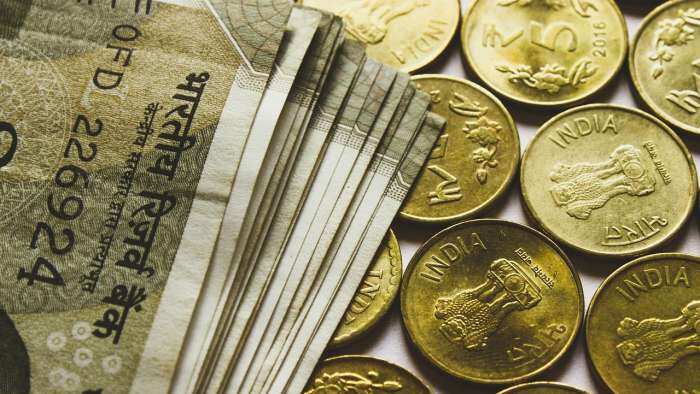Deposit mobilisation, higher provisions challenge for banking in FY24: Report
Maintaining its neutral outlook on the important sector for the economy for the upcoming fiscal year, India Ratings and Research said the key financial metrics are likely to improve further in FY24 on stronger balance sheets, higher credit demand and more stability in interest rates.

Mobilising required deposits without compromising on margins and the heightened provisions as the system shifts to a new model of loan provisioning will be the key challenges for Indian banking in FY24, a report said on Wednesday.
Maintaining its neutral outlook on the important sector for the economy for the upcoming fiscal year, India Ratings and Research said the key financial metrics are likely to improve further in FY24 on stronger balance sheets, higher credit demand and more stability in interest rates.
"The banking sector's challenges include mobilising deposits while minimising the impact on margins, and provisions that could emerge in the near-medium term on account of the expected transition to the Expected Credit Loss (ECL) regime for provisions," the domestic rating agency said.
It estimated the deposit growth to come at a low 9-11 per cent in FY24.
Also Read:ICICI Bank hikes MCLR on home and auto loans - check latest rates here
Deposit repricing will continue to happen in a "competitive environment", the agency said, pointing out that banks have drawn on almost Rs 5 lakh crore of liquidity since March 2022, which has enabled reasonably priced and evenly paced deposit mobilisation.
As banks grow their books at higher rates than seen in the preceding five to seven years, some of the improvements in low-cost deposits could reverse especially for public sector banks (PSBs), it said.
Credit growth, which stood at 18.8 per cent as of December 2022 growth, will continue to race ahead of deposit growth that lagged at 11.8 per cent in the same quarter, the agency said, adding that this will keep pushing up deposit rates.
Transmission of RBI's rate hikes is playing out into both the lending and deposit rates, which are up by 2 per cent, it said.
Banks are also resorting to using wholesale deposits including bulk deposits opportunistically to meet the demand for lending, the agency said.
The draft framework for banks' ECL (expected credit loss) has the potential to bring structural changes in loan pricing and credit dissemination, especially to segments that have traditionally not demonstrated a pristine performance, it said.
It will have a "manageable impact" on the capital buffers of the lenders, the report said, adding that banks could attempt to pass on additional provisioning costs to end-borrowers through pricing.
The impact on banks would be asymmetric on account of varying inputs to the ECL model, portfolio concentrations and focus, product mix, take on macroeconomic expectations and many other factors, it said.
The lenders can also face operational challenges in terms of making data with relevant history available in shape and form required for the ECL models.
Also Read: Income Tax: What are the 3 deductions under the new tax regime?
Get Latest Business News, Stock Market Updates and Videos; Check your tax outgo through Income Tax Calculator and save money through our Personal Finance coverage. Check Business Breaking News Live on Zee Business Twitter and Facebook. Subscribe on YouTube.
RECOMMENDED STORIES

Power of Compounding: How soon will monthly SIP of Rs 6,000, Rs 8,000, and Rs 10,000 reach Rs 5 crore corpus target?

SBI Guaranteed Return Scheme: Know how much maturity amount you will get on Rs 2 lakh, 2.5 lakh, 3 lakh, 3.5 lakh and Rs 4 lakh investments under Amrit Vrishti FD scheme

SBI Senior Citizen FD Rate: Here's what State Bank of India giving on 1-year, 3-year, 5-year fixed deposits currently

SBI Senior Citizen Latest FD Rates: What senior citizens can get on Rs 7 lakh, Rs 14 lakh, and Rs 21 lakh investments in Amrit Vrishti, 1-, 3-, and 5-year fixed deposits
07:15 AM IST









 Cedar-IBSi Capital to fund 10-15 startups in fintech sector
Cedar-IBSi Capital to fund 10-15 startups in fintech sector  Urban cooperative banks need to evolve digitally: RBI Deputy Governor
Urban cooperative banks need to evolve digitally: RBI Deputy Governor  RBI cancels licence of Vijayawada-based Durga Co-op Urban Bank
RBI cancels licence of Vijayawada-based Durga Co-op Urban Bank  Bank Locker Charges: From SBI to HDFC Bank and ICICI Bank – Know locker charges of 5 major banks
Bank Locker Charges: From SBI to HDFC Bank and ICICI Bank – Know locker charges of 5 major banks Hidden charges on SBI ATM cards: Is your money disappearing quietly?
Hidden charges on SBI ATM cards: Is your money disappearing quietly?